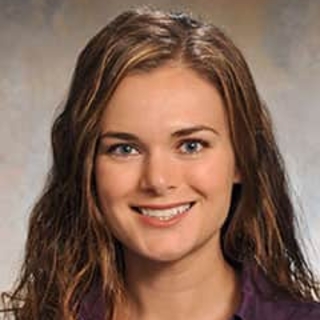Researchers from the Neuroscience Center at Children’s Hospital of Philadelphia (CHOP) have developed a prediction model that determines which newborn babies are likely to experience seizures in the Neonatal Intensive Care Unit (NICU). This model could be incorporated into routine care to help the clinical team decide which babies will need electroencephalograms (EEGs) and which babies can be safely managed in the Neonatal Care Unit without monitoring through EEGs. This would allow families and providers to care for babies without intrusive and unnecessary procedures. The findings were published by The Lancet Digital Health.
Neonatal seizures are a common neurological issue in newborn babies. In particular, approximately 30% of newborn babies with temporary lack of oxygen to the brain (known as hypoxic-ischemic encephalopathy, or HIE) will have seizures. Most of these seizures can only be detected through EEG monitoring and not simply through clinical observation, an important lesson that has shaped the management of babies with seizures in the last two decades. Newborns with HIE are at an increased risk for neurobehavioral problems and epilepsy later in life, and detecting and treating seizures is important to reduce seizure-induced injury, thereby improving outcomes for newborns with early seizures.
Current guidelines suggest that newborns with HIE undergo four to five days of EEG monitoring to detect seizures. However, this approach is not always feasible, as many of these babies receive care in NICUs that do not have access to continuous EEG (CEEG). Even NICUs in large healthcare networks often only have limited EEG resources, especially as the interpretation of EEG readings is time intensive for the entire care team, including physicians and technologists.
Predicting which newborns will experience seizures is complex, and prior attempts to predict future seizures using clinical and EEG data have not yielded highly accurate results. To help address these issues, researchers at CHOP used data from a recently developed EEG reporting form that is used for all EEGs to build prediction models using machine learning methods.

“In this study, we used data from the EEGs of more than 1,000 newborns to build models to predict neonatal seizures,” first study author Jillian McKee, MD, PhD, a pediatric epilepsy fellow in the Division of Neurology and the Pediatric Epilepsy Program at CHOP.
“This data helped us optimize which newborns should receive EEG monitoring in the NICU.”
The researchers built their seizure prediction models based on standardized EEG features reported in the electronic medical records. The retrospective study found that these models could predict seizures, and particularly seizures in newborns with HIE, with more than 90% accuracy. The models could be tuned to not miss seizures, performing with sensitivity of up to 97% in the overall cohort and 100% among newborns with HIE while maintaining high precision. The authors indicated that this is the first study reporting on a seizure prediction model based on clinically-derived standardized reports. The study team has made the model publicly available as an online tool.

“If we can further validate this model, it could enable a more targeted use of limited EEG resources by reducing EEG use in low-risk patients, which will make care of babies with neurological concerns in the NICU more personalized and focussed,” said senior study author Ingo Helbig, MD, a pediatric neurologist in the Division of Neurology and co-director of Epilepsy Neurogenetics Initiative (ENGIN) at CHOP. “We believe incorporating this model into real-time clinical practice could greatly improve the quality and efficiency of the care we deliver in these critical early days of life.”
“This project indicated we can efficiently acquire standardized data as part of clinical practice to drive research which enables us to provide better care,” said Nicholas Abend, MD, a co-author and Senior Medical Director within the Neuroscience Center at CHOP. “We are already using this same approach to collect data on all EEG reports, thousands of epilepsy visits over time, and numerous other domains within the Neuroscience Center, thus establishing a true learning healthcare system.”
McKee et al, “Leveraging electronic medical record-embedded standardized electroencephalogram reporting to develop neonatal seizure prediction models: a retrospective cohort study.” Lancet Digit Health. Online March 22, 2023. DOI: 10.1016/PIIS2589-7500(23)00004-3
Featured in this article
Specialties & Programs
Researchers from the Neuroscience Center at Children’s Hospital of Philadelphia (CHOP) have developed a prediction model that determines which newborn babies are likely to experience seizures in the Neonatal Intensive Care Unit (NICU). This model could be incorporated into routine care to help the clinical team decide which babies will need electroencephalograms (EEGs) and which babies can be safely managed in the Neonatal Care Unit without monitoring through EEGs. This would allow families and providers to care for babies without intrusive and unnecessary procedures. The findings were published by The Lancet Digital Health.
Neonatal seizures are a common neurological issue in newborn babies. In particular, approximately 30% of newborn babies with temporary lack of oxygen to the brain (known as hypoxic-ischemic encephalopathy, or HIE) will have seizures. Most of these seizures can only be detected through EEG monitoring and not simply through clinical observation, an important lesson that has shaped the management of babies with seizures in the last two decades. Newborns with HIE are at an increased risk for neurobehavioral problems and epilepsy later in life, and detecting and treating seizures is important to reduce seizure-induced injury, thereby improving outcomes for newborns with early seizures.
Current guidelines suggest that newborns with HIE undergo four to five days of EEG monitoring to detect seizures. However, this approach is not always feasible, as many of these babies receive care in NICUs that do not have access to continuous EEG (CEEG). Even NICUs in large healthcare networks often only have limited EEG resources, especially as the interpretation of EEG readings is time intensive for the entire care team, including physicians and technologists.
Predicting which newborns will experience seizures is complex, and prior attempts to predict future seizures using clinical and EEG data have not yielded highly accurate results. To help address these issues, researchers at CHOP used data from a recently developed EEG reporting form that is used for all EEGs to build prediction models using machine learning methods.

“In this study, we used data from the EEGs of more than 1,000 newborns to build models to predict neonatal seizures,” first study author Jillian McKee, MD, PhD, a pediatric epilepsy fellow in the Division of Neurology and the Pediatric Epilepsy Program at CHOP.
“This data helped us optimize which newborns should receive EEG monitoring in the NICU.”
The researchers built their seizure prediction models based on standardized EEG features reported in the electronic medical records. The retrospective study found that these models could predict seizures, and particularly seizures in newborns with HIE, with more than 90% accuracy. The models could be tuned to not miss seizures, performing with sensitivity of up to 97% in the overall cohort and 100% among newborns with HIE while maintaining high precision. The authors indicated that this is the first study reporting on a seizure prediction model based on clinically-derived standardized reports. The study team has made the model publicly available as an online tool.

“If we can further validate this model, it could enable a more targeted use of limited EEG resources by reducing EEG use in low-risk patients, which will make care of babies with neurological concerns in the NICU more personalized and focussed,” said senior study author Ingo Helbig, MD, a pediatric neurologist in the Division of Neurology and co-director of Epilepsy Neurogenetics Initiative (ENGIN) at CHOP. “We believe incorporating this model into real-time clinical practice could greatly improve the quality and efficiency of the care we deliver in these critical early days of life.”
“This project indicated we can efficiently acquire standardized data as part of clinical practice to drive research which enables us to provide better care,” said Nicholas Abend, MD, a co-author and Senior Medical Director within the Neuroscience Center at CHOP. “We are already using this same approach to collect data on all EEG reports, thousands of epilepsy visits over time, and numerous other domains within the Neuroscience Center, thus establishing a true learning healthcare system.”
McKee et al, “Leveraging electronic medical record-embedded standardized electroencephalogram reporting to develop neonatal seizure prediction models: a retrospective cohort study.” Lancet Digit Health. Online March 22, 2023. DOI: 10.1016/PIIS2589-7500(23)00004-3
Contact us
Ben Leach
Division of Neurology